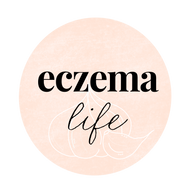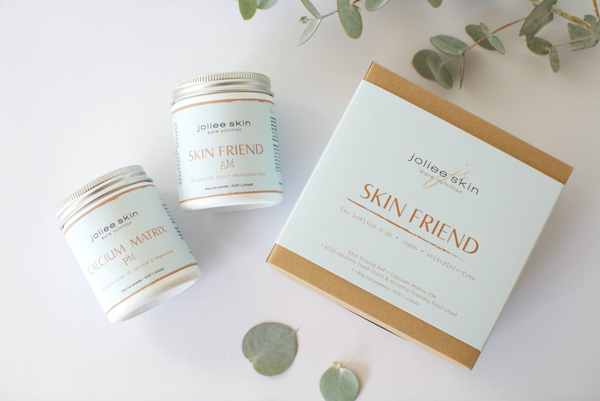Five ways to prevent dust mite allergy

Dust mite allergy often occurs in conjunction with eczema. When the skin is broken, dust mites can enter the skin and an allergy to dust mites can develop. When the eczema repairs, dust mite allergy naturally reduces and can disappear so the key is to repair your eczema. Here are the top five ways to treat dust mite allergy and eczema.
Why bother treating dust mite allergy?
There is a close correlation with dust mite allergy, eczema and asthma. More than 80% of children with asthma are sensitive to dust mites, compared with 30% of the general population, according to UK researchers (Sporik).
Most children with eczema are also allergic to house dust mites, and this a major trigger of the itch, according to research published in the British Medical Journal.
Dust mite allergy also increases the risk of developing asthma, according to Australian researchers (Stewart). So it's important to prevent dust mite allergy and eczema to reduce the itch and decrease your risk of developing asthma.
Five ways to prevent dust mite allergy
1. Strengthen your skin from the inside out
Your skin is literally made from the foods you eat so it makes sense to start by changing your diet. People with eczema often begin by avoiding the foods they are allergic to, but this rarely prevents eczema (although it often improves to a degree). In addition to this, it's important to have nutritional support as your broken skin (i.e. your eczema) could be caused by nutritional deficiencies, which can cause genetic defects in the skin.
Nutritionist Karen Fischer from the Eczema Life Clinic says "For the past five years we have been using Skin Friend to help our patients who have dust mite allergy and eczema. It contains ingredients that assist in the healing and repair of the skin and supports healthy functioning of the immune system. So it helps to reduce and prevent environmental sensitivities and reactions to dust mites."
2. Avoid dust mites (temporarily)
While you are treating your dust mite allergy with diet and supplements, it's helpful to also minimise exposure to dust mites.
Karen says, "My daughter was diagnosed with dust mite allergy via a Skin Prick Test. So she was advised to avoid dust, sitting on carpets and fluffy toys (which can harbour dust mites) and we were advised to use dust mite mattress protectors. While she still had eczema, this prevented her eczema from worsening and her flare ups stabilised. After using Skin Friend - the supplement developed to help her eczema - her dust mite allergy disappeared and she can now lie down on old carpet (in our 100 year old house) and she has no adverse reactions."
3. Avoid salicylates (temporarily)
Salicylates are a natural chemical that can worsen eczema and cause skin rashes in sensitive individuals, according to research published by the RPA Hospital Allergy Unit (Loblay). Salicylates are found in herbs, all teas, green detox powders, honey and fruit/vegetable extracts. People with eczema and other skin inflammatory disorders often don’t realise they are sensitive to sailcylates. However, 90% of people with eczema who have tried every cream, diet, eczema treatment and seen every specialist often find they are sensitive to salicyltes and their eczema completely clears up when they avoid them.
Signs of salicylate-sensitivity vary from person to person and include eczema and other skin rashes, hives, headaches, hyperactivity, behavioural problems, irritable bowel symptoms, stomach cramps, runny nose, hay fever, reflux, anxiety, sleep disturbances, bedwetting and insomnia (Loblay).
We have provided a complete list of salicylate foods and beverages which can be useful for people with skin rashes and allergy/sensitivity symptoms. Receive the chart for free when you sign up to our newsletter here.
4. Improve your liver health
Your liver is designed to detoxify salicylates and other chemicals so they can be safely removed from the body. In order for this to occur, your diet (or the maternal diet if your eczema-prone baby is being breastfed), needs to supply all the nutrients the liver requires for salicylate detoxification. If you have eczema then a diet that is both good for the liver and low in salicylates is a safe and gentle way to reverse sensitivities.
The Eczema Diet follows several principals which are based on thirty years of salicylate research (from the RPAH), but with a focus of using healthy low-salicylate foods and supplements to improve the health of your liver, gut and other eliminatory organs. Skin Friend is also a part of the Eczema Diet program to improve liver health.
5. Salt baths
While not a cure for eczema, salt baths can help to temporarily reduce reactions to dust mites and calm the itch of eczema.
Salt Bath Recipe:
If you suspect you have reacted to dust mites, fill a bath with warm water and dissolve 1 cup of bicarb soda and 1/2 cup of sea salt. Soak briefly, then moisturise your skin.
Bicarb Cloth Recipe:
Add a tablespoon of bicarb soda onto a damp soft cloth so the bicarb soaks up the water. Then place the cloth onto your affected skin, and hold it there for a minute. Your skin redness should instantly reduce.
FAQ: “Do your products help to prevent dust mite allergy? If so, is the starting point to read The Eczema Diet or book a consultation first?”
A good starting point, if you have dust mite allergy, is to read The Eczema Diet and start using Skin Friend. Then if your skin is not seeing signs of improvement after 6 weeks, you can join the Eczema Diet Membership. There are no appointments necessary to speak with Karen and her team of nutritionists on the support forum.
SHOP THE STORY
Join the Eczema Diet Membership >>
References

